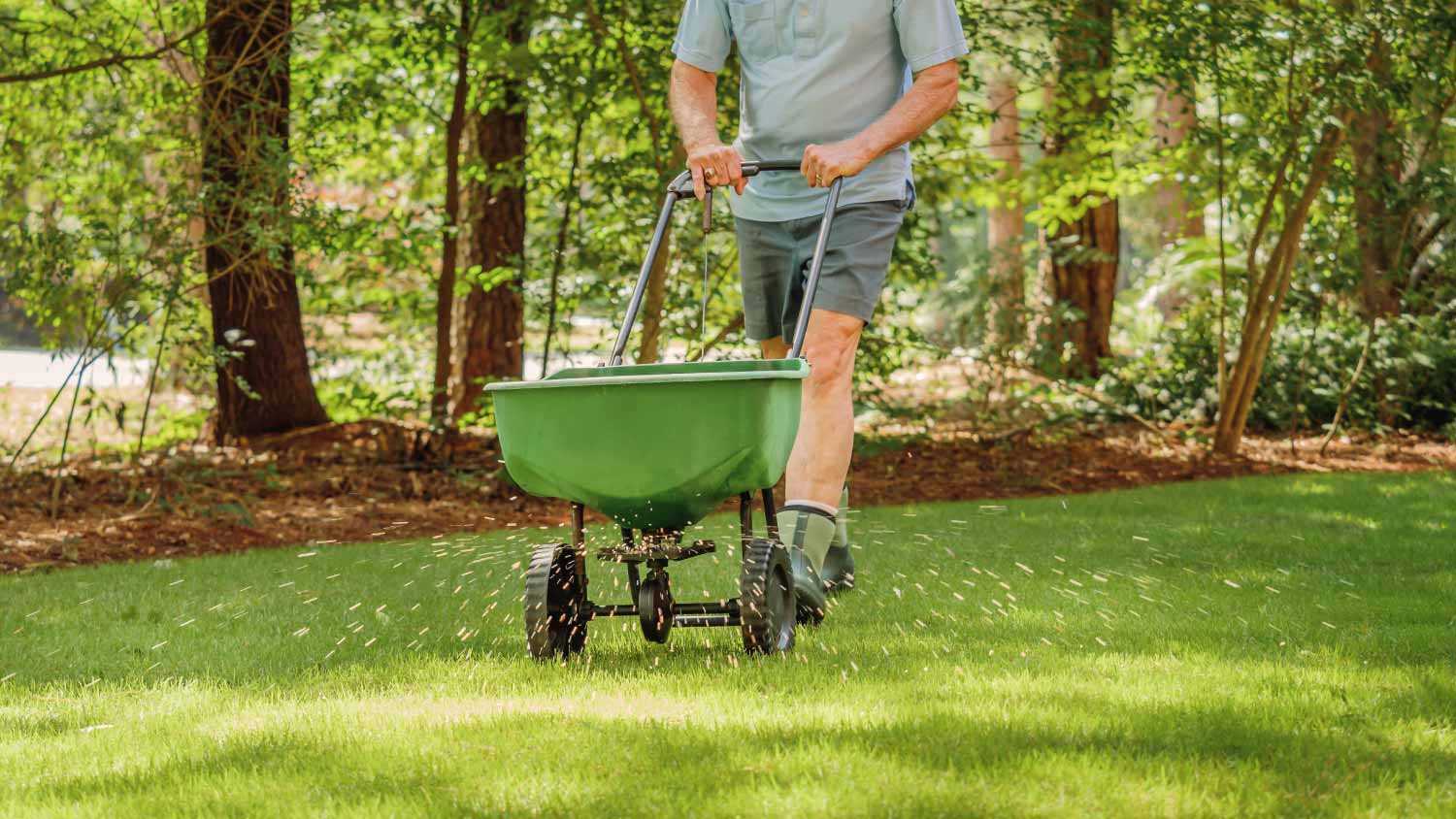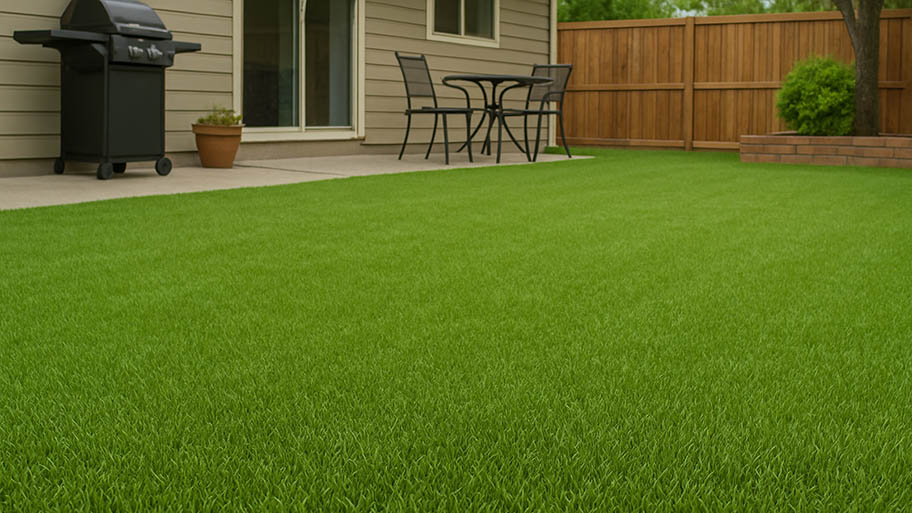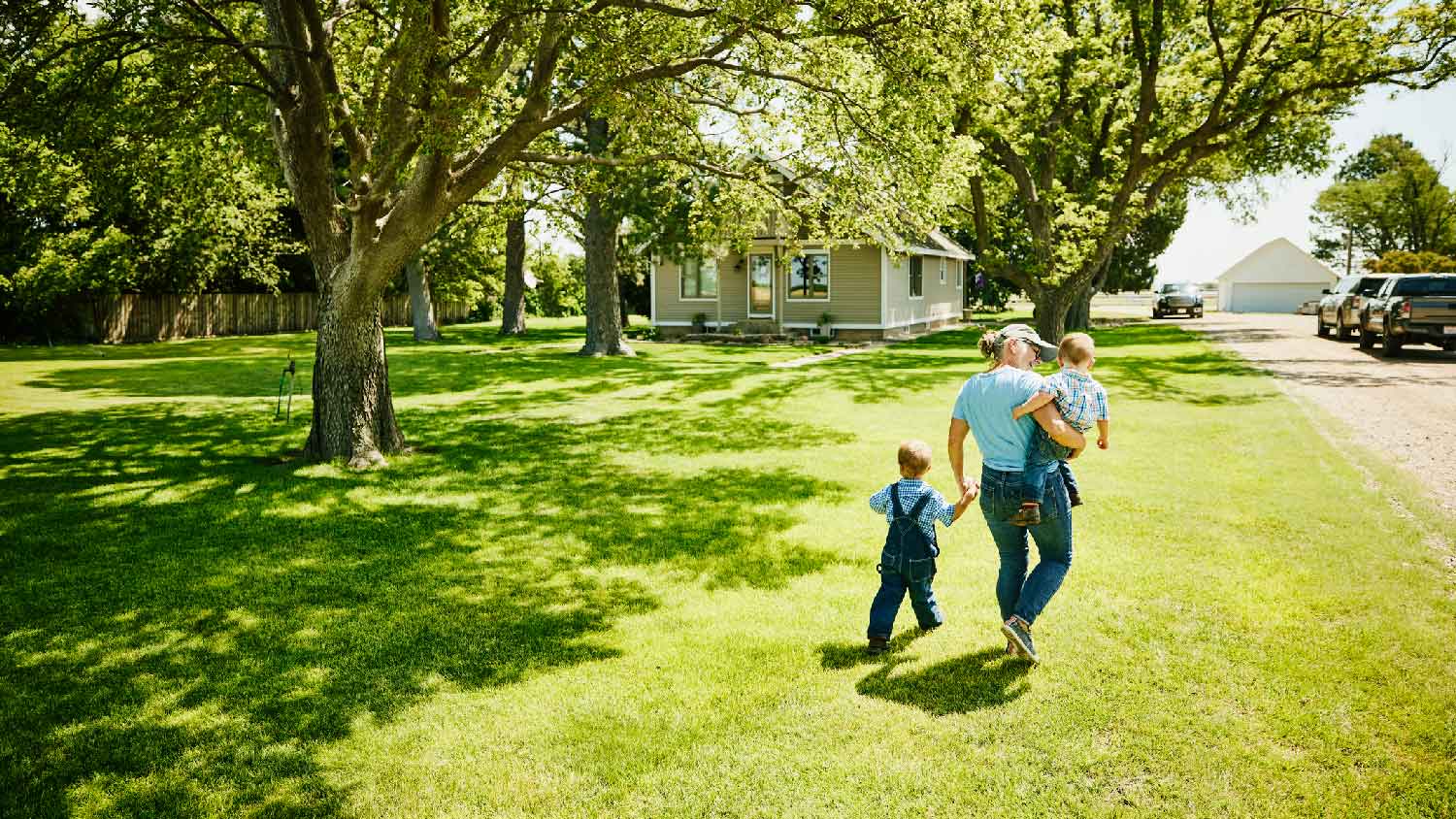
Removing an old lawn is often necessary to plant new grass or build a new outdoor structure. Find out what to budget for your lawn removal cost.
To revive a damaged lawn, homeowners will pay about $4,000 on average, but the typical range can cost between $400 and $3,000.


Lawn size is a significant cost factor, with prices per square foot averaging $0.75 to $4.
Different types of lawn treatments vary in price, with fertilization ranging from $70 to $380 and re-sodding costing between $1,070 and $3,000.
Labor for lawn renovation costs between $50 and $100 per hour, but the cost increases for customized treatments.
When renovating your lawn, you can expect to spend anywhere from $70 to $7,900, depending on the services needed and size of the area. The average cost of renovating a lawn is $4,000.
If your lawn has seen better days and is full of patches of weeds, brown spots, and bare or thin grass, it’s time for a lawn renovation. Your total lawn renovation cost will depend on several factors, including the condition of your lawn and the types of treatments. Our guide will help you understand the costs for your lawn renovation project, plus when it’s time to hire a lawn care professional.

Several factors will dictate the price when calculating your total lawn renovation cost. These factors include the type of treatment, lawn size, labor, prep, type of grass, and the condition of your lawn. Here’s what you can expect to pay for lawn renovation.
Lawn renovation typically costs $0.75 to $4.00 per square foot to renovate patches of damaged lawn. Here’s what you can expect to pay for lawn renovation per square foot:
| Lawn Renovation Per Square Foot | Average Cost |
|---|---|
| 100 | $80–$400 |
| 250 | $200–$1,000 |
| 500 | $375–$2,000 |
| 1,000 | $750–$4,000 |
Before beginning your lawn renovation, you’ll want a lawn care professional to assess your yard. Depending on the condition of your lawn, you may only need a single treatment to bring it back to life. However, if your lawn has faced years of neglect, wear and tear, or suffered through severe storms, you’ll likely need several treatments. You can expect your total lawn renovation cost to increase with each added treatment, especially if your lawn requires custom equipment and materials.
Great experience from start to finish. They responded to my inquiry quickly and came out to give me a quote the same day. My yard was overgrown with weeds and needed lots of trimming. The guys came out and pulled all of the weeds by hand to get them out by the roots and trimmed up nicely. They were able to come up with a treatment plan within my budget to get my lawn and yard looking great again. Very professional, efficient and knowledgeable.
| Lawn Treatment Type | Average Price |
|---|---|
| Seeding | $440–$1,750 |
| Hydroseeding | $500–$1,910 |
| Power Seeding | $400–$7,900 |
| Aeration | $75–$200 |
| Fertilization | $70–$380 |
| Re-sodding | $1,070–$3,000 |
| Dethatching | $160–$225 |
| Soil Testing | $680–$2,155 |
Seeding, reseeding, or overseeding your lawn can cost between $440 and $1,750. Seeding is a great way to revive thinning grass or bald patches. Lawn care pros may choose to overseed lawns with severe damage. Overseeding involves spreading fresh grass seed over all existing grass to encourage new growth.
Hydroseeding costs $500 to $1,910. If your lawn needs immediate attention, hydroseeding might be the right option, and your lawn will look fresh and new in under a month. Hydroseeding requires spraying a pressurized mix of water, fertilizer, grass seed, and mulch all over your lawn to increase growth and vitality quickly.
Power seeding costs $400 to $7,900. Power seeding is a heavy-duty lawn restoration option when seeding and aeration don’t do the trick. Power seeding is a more intense method that uses heavy machinery to cut rows or slits into the grass to plant seeds and ensure that vital nutrients will reach the roots. Once you choose power seeding for your lawn, you can follow up annually with seeding or aeration.
For lawn aeration, you’ll pay between $75 and $200. Lawn care pros use a core or spike to create small holes in the grass, allowing water, air, and vital nutrients to reach the roots of the grass. Depending on the condition of your lawn, you may need lawn aeration once per season.
You can expect to pay $70 to $380 for lawn fertilization. Fertilizer provides essential nutrients to your grass and soil, allowing it to grow and thrive. Your total cost will depend on the size of your yard, the type of fertilizer you choose, and how often you’ll require fertilization treatment.
Re-sodding your lawn will cost $1,070 to $3,000. Re-sodding is the process of removing old, damaged grass and replacing it with fresh sod instead of using seed to re-grow grass. Re-sodding your lawn is an excellent option because you can replace the most damaged grass without upheaving your entire lawn.
Lawn dethatching will cost you between $160 and $225. Thatch is the thick buildup of debris, dead grass, and roots that accumulate on top of your lawn. It hinders sunlight, water, and nutrients from reaching the grass roots. Dethatching is the process of removing this upper layer via a dethatching machine or power raking.
Soil testing costs between $680 and $2,155. Soil testing is crucial for lawn renovation. It can identify harmful contaminants and help lawn care pros decide the best options for fertilization. Soil testing also identifies which nutrients your lawn needs to thrive and its current pH level, which measures soil acidity.

Another factor in determining your overall lawn renovation cost is the type of grass in your yard. Here’s what you can expect with different types of grass:
| Grass Species | Pros | Cons |
|---|---|---|
| Zoysia | Perfect for transitional climates | Susceptible to thatch issues |
| Bermuda | Can plant new grass from seeds | Requires regular aeration and fertilization |
| Ryegrass | Durable, tolerates cold weather | Hot summers can cause damage and discoloration |
| Fescue | Drought and heat-resistant | Requires a lot of maintenance |
With Zoysia vs. Bermuda grass, Zoysia is lower maintenance and thrives well in shade and drought-prone environments. However, Zoysia must be planted as sod instead of seed, making it much more expensive when it comes time to grow more grass. Bermuda grass is more affordable and has a quick recovery time. However, it is more susceptible to thatch, diseases, and pests.
In the debate over ryegrass vs. fescue grass, both types fare well in cool climates. Ryegrass fares better in colder climates, yet it may also require yearly replanting to ensure it stays thick and healthy. Fescue grass is very durable and able to withstand heavy foot traffic. On the other hand, you’ll likely have to re-sod every so often to ensure fescue maintains its dark green color.
You can expect to pay $50 to $100 per hour in lawn care labor. Your labor costs will increase if your lawn requires customized treatments, special equipment, and costly materials. When interviewing lawn care professionals, be sure to specify your lawn size and desired treatments to receive accurate price quotes.
Sometimes, pros must perform some prep work before beginning your lawn renovation project. A yard cleanup can cost between $190 and $1,000, and stump removal costs $175 to $550.
Another issue that might be plaguing your lawn is uneven terrain. The cost to level your yard will run from $1,020 to $3,300.
Once your lawn is completely renovated, you’ll want to provide the proper maintenance to keep it in excellent condition. Here are some maintenance ideas to keep up with your lawn care:
Lawn pest control: $110–$260
Weed control: $35–$400
Lawn care services: $100–$500 per month
Mowing: $50–$205
To ensure your grass stays healthy and green, consider installing a sprinkler system to take care of its watering. You can expect to pay $1,665 to $3,550 for sprinkler system installation, depending on the size of your lawn and the type of system.
If you’re handy and have the proper tools, you can tackle certain lawn renovation treatments yourself. You’ll save an average of $50 to $250 per service, but you’ll need to cover the cost of equipment, tools, and supplies.
If you want your lawn to thrive, we recommend hiring a lawn care service near you. A lawn care pro can properly diagnose your lawn issues and use their expert skills, knowledge, and experience to ensure your lawn renovation is successful. In addition, pros come equipped with the heavy equipment and machinery for your lawn renovation project.
While you can’t change the cost of individual lawn treatments, there are still ways to save, including:
Book treatments early: prices tend to increase during peak lawn season.
Bundle services: ask for a discount if you are having lawn renovation treatments done simultaneously.
Get quotes from at least three local lawn renovation companies.
Choose plants that are native to your area and that require less water to thrive.
Tackle the prep work yourself—clear the yard of leaves, debris, sticks, and other woodland materials.
Home is the most important place on earth, which is why Angi has helped more than 150 million homeowners transform their houses into homes they adore. To help homeowners with their next project, Angi provides readers with the most accurate cost data and upholds strict editorial standards. We extensively research project costs to develop the pricing data you see, so you can make the best decisions for you and your home. We rely on reputable sources, including the U.S. Bureau of Labor Statistics, academic journals, market studies, and interviews with industry experts—all to ensure our prices reflect real-world projects.
Want to help us improve our cost data? Send us a recent project quote to [email protected]. Quotes and personal information will not be shared publicly.
From average costs to expert advice, get all the answers you need to get your job done.

Removing an old lawn is often necessary to plant new grass or build a new outdoor structure. Find out what to budget for your lawn removal cost.

Your total lawn care cost depends on several factors, including the type of service and lawn size. Our guide will cover what you can expect to pay for lawn care.

Artificial grass is a low-maintenance alternative to traditional turf. Learn how much artificial grass installation costs and what affects your price.

A lush lawn doesn't have to be an unattainable luxury. Use this guide to learn how to fix patchy grass throughout your yard.

Curious how to kill weeds in your grass and keep them from popping up every season? Here are five weed-fighting methods to beautify your lawn.

Why is my yard so soft and soggy? Use this helpful guide to diagnose the issue and implement a solution that will restore your yard’s health.